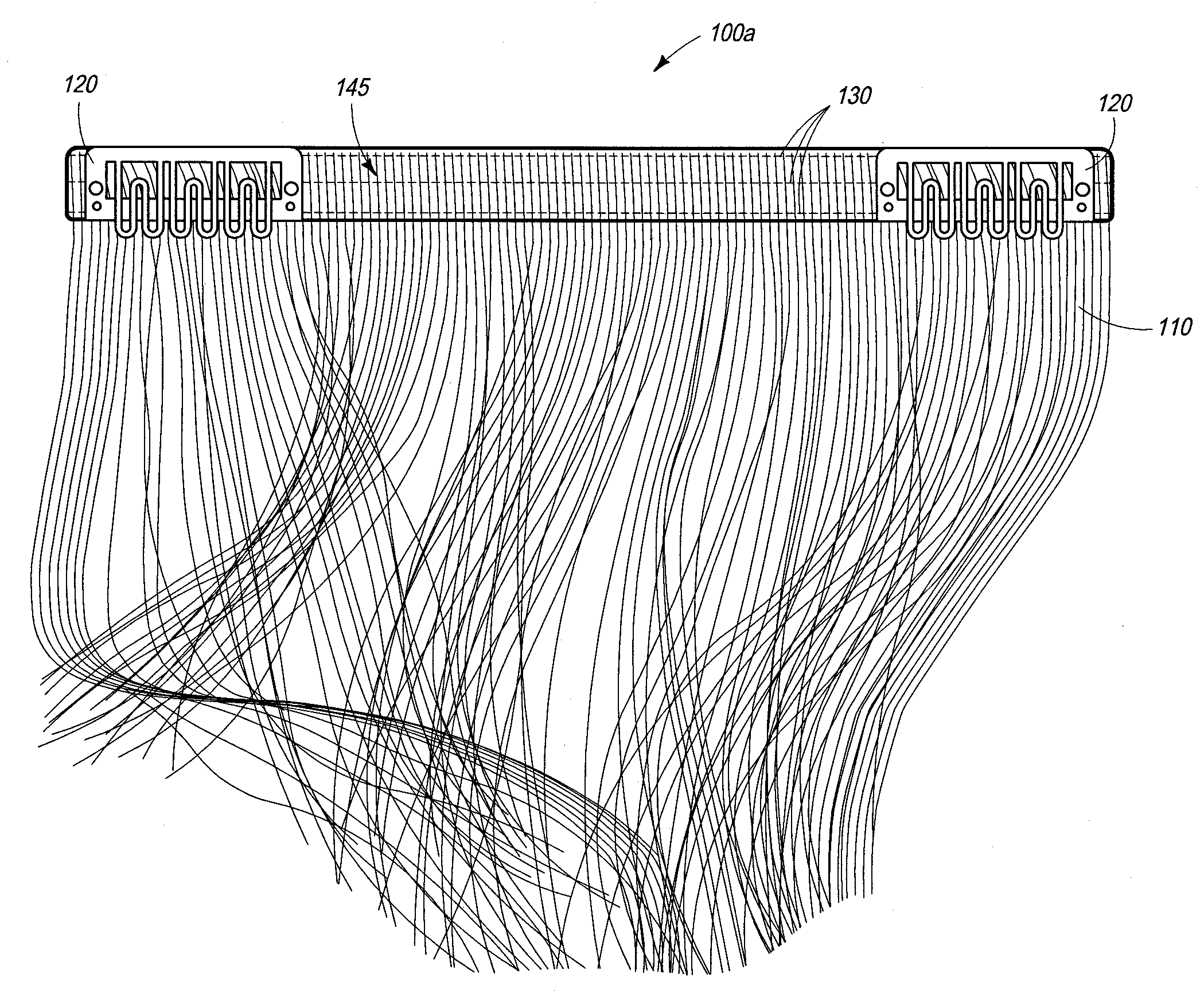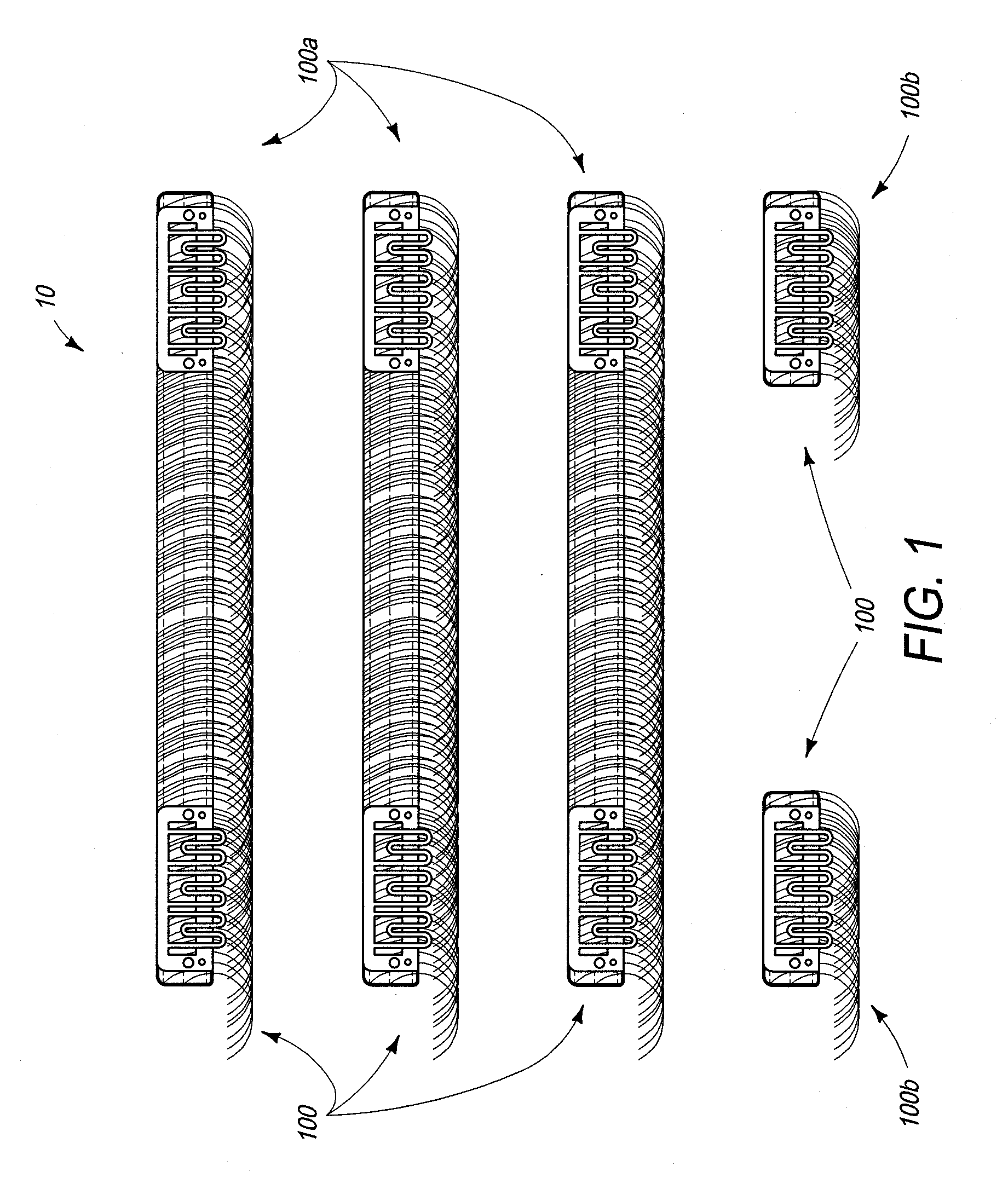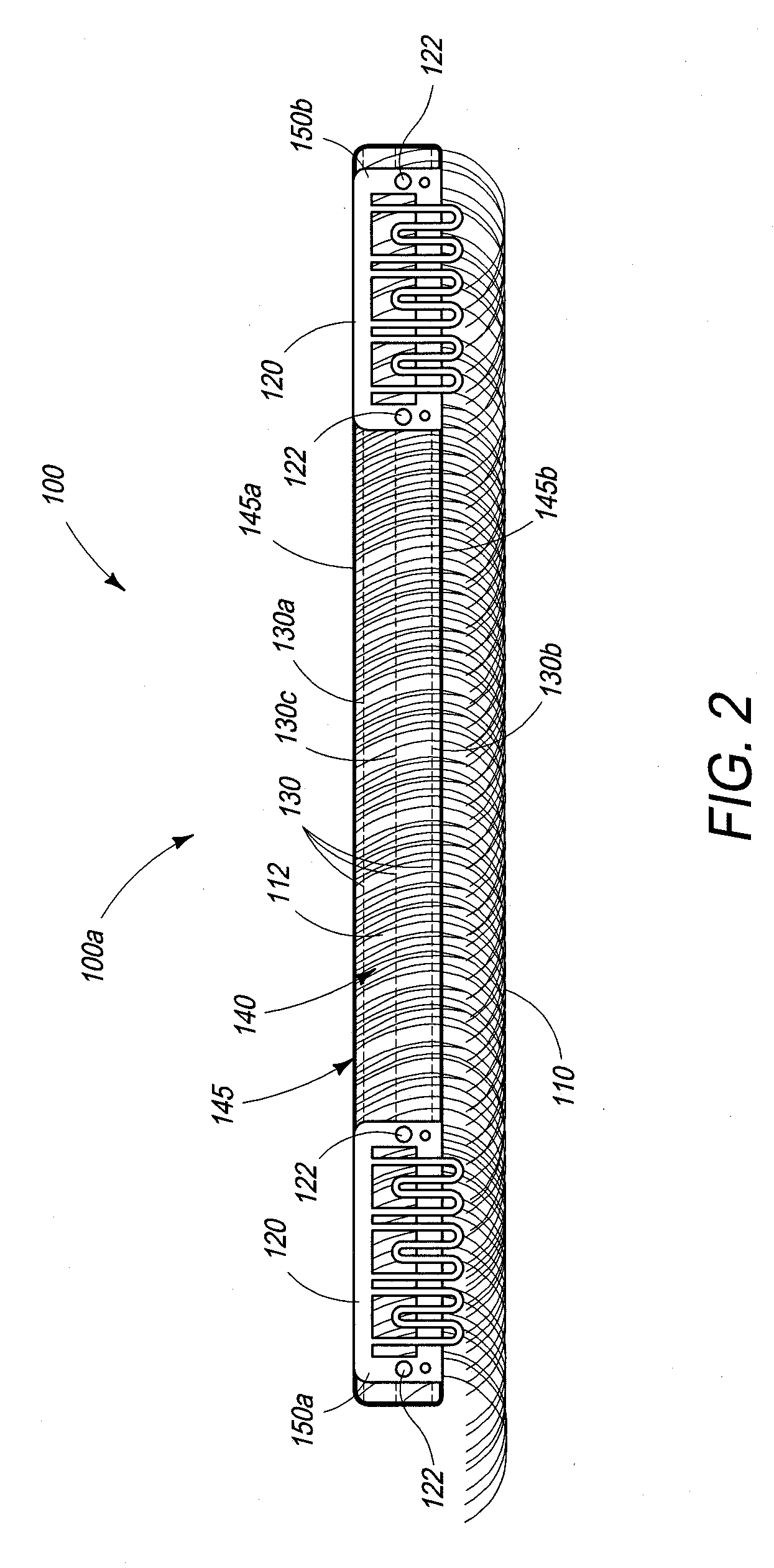Hair Addition
a technology of hair addition and hair, applied in the field of hair addition, can solve the problem of relative thickness of products
- Summary
- Abstract
- Description
- Claims
- Application Information
AI Technical Summary
Benefits of technology
Problems solved by technology
Method used
Image
Examples
Embodiment Construction
FIG. 1 shows a set 10, according to one embodiment, of five hair additions 100 to be worn on a user's head. Two embodiments 100a, 100b of the hair additions 100 are present in the set 10.
Turning to FIG. 2, which specifically shows embodiment 100a, each hair addition 100 has hair strands 110, at least one clip 120, at least one thread 130, and adhesive 140. The embodiment 100a has opposed ends 150a, 150b and a length of approximately four inches between the ends 150a, 150b. Further, it includes two clips 120, one at each end 150a, 150b. Three threads 130 extend across the hair strands 110 between the ends 150a, 150b to couple ends 112 of the respective hair strands 110 to one another, and the adhesive 140 is configured such that it sandwiches the ends 112 of the hair strands 110 and the threads 130 to couple the ends 112 to one another and prevent individual hair strands 110 from falling out.
The adhesive 140 forms a strip 145 between the ends 150a, 150b and may define the ends 150a, ...
PUM
 Login to View More
Login to View More Abstract
Description
Claims
Application Information
 Login to View More
Login to View More - R&D
- Intellectual Property
- Life Sciences
- Materials
- Tech Scout
- Unparalleled Data Quality
- Higher Quality Content
- 60% Fewer Hallucinations
Browse by: Latest US Patents, China's latest patents, Technical Efficacy Thesaurus, Application Domain, Technology Topic, Popular Technical Reports.
© 2025 PatSnap. All rights reserved.Legal|Privacy policy|Modern Slavery Act Transparency Statement|Sitemap|About US| Contact US: help@patsnap.com



